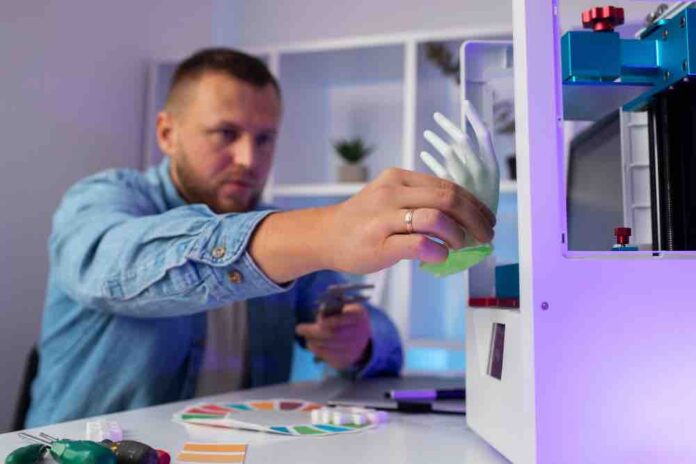In the realm of modern manufacturing, 3D printing, also known as additive manufacturing, stands out as a revolutionary technology. It enables the creation of three-dimensional objects by depositing successive layers of material, based on a digital model. This transformative process has garnered significant attention across industries due to its versatility, customization capabilities, and potential to reshape traditional manufacturing practices.
Understanding 3D Printing
At its core, 3D printing involves the layer-by-layer deposition of materials such as plastics, metals, ceramics, or composites to build objects with intricate geometries and complex structures. Unlike subtractive manufacturing processes that involve cutting or machining materials from a solid block, 3D printing adds material layer by layer, offering unprecedented design freedom and flexibility.
The process typically begins with a digital model created using computer-aided design (CAD) software. This digital model is then sliced into thin layers, and the 3D printer interprets each slice to deposit material accordingly. Depending on the technology used, the material may be extruded through a nozzle, cured with UV light, or sintered with a laser to create the desired object.
What’s New in 3D Printing?
In recent years, 3D printing technology has undergone significant advancements, driving innovation and expanding its applications across various industries. Some of the notable developments include:
- Advanced Materials: One of the most significant trends in 3D printing is the development of new materials suitable for a wide range of applications. Beyond traditional plastics, manufacturers now have access to metals, ceramics, biocompatible polymers, and even conductive materials for electronics applications. This expansion of materials enables the production of functional prototypes, end-use parts, and custom components with tailored properties and performance characteristics.
- Speed and Efficiency: Improvements in printing speed and efficiency have made 3D printing more accessible and viable for large-scale production. Enhanced printing technologies, optimized printing processes, and faster curing or sintering methods have reduced lead times and production costs, making 3D printing competitive with traditional manufacturing methods for certain applications.
- Multimaterial Printing: The ability to print objects with multiple materials or properties in a single process has opened up new possibilities in product design and engineering. Multimaterial printing allows for the creation of complex assemblies, integrated electronics, and functional prototypes with varying mechanical, thermal, and electrical properties. This capability enables designers to explore new design concepts and optimize performance without assembly or post-processing.
- Bioprinting and Tissue Engineering: In the field of healthcare, 3D printing has made significant strides in bioprinting and tissue engineering. Researchers can now fabricate complex biological structures, including organs, tissues, and scaffolds, using living cells and bioinks. Bioprinted tissues have the potential to revolutionize regenerative medicine, drug testing, and personalized healthcare by enabling the creation of patient-specific implants and organs.
The Role of 3D Printing in 2024
Looking ahead to 2024, the role of 3D printing is expected to continue expanding and evolving across various industries:
- Customization and Personalization: In the consumer goods and retail sectors, 3D printing is poised to enable mass customization on a scale never seen before. With the ability to produce unique, personalized products cost-effectively, manufacturers can meet the growing demand for customized goods and tailor offerings to individual preferences and requirements.
- Sustainable Manufacturing: As sustainability becomes a top priority for businesses and consumers alike, 3D printing offers a more environmentally friendly alternative to traditional manufacturing methods. By minimizing material waste, reducing energy consumption, and enabling lightweight and optimized designs, 3D printing contributes to a more sustainable and circular economy.
- Supply Chain Resilience: The COVID-19 pandemic highlighted vulnerabilities in global supply chains, prompting organizations to reassess their manufacturing strategies. 3D printing offers a decentralized and agile approach to production, allowing for on-demand manufacturing, local production, and rapid prototyping. In 2024, 3D printing is expected to play a crucial role in building resilient supply chains that are adaptable to disruptions and fluctuations in demand.
- Innovation and Research: 3D printing continues to drive innovation and research in various fields, including aerospace, automotive, and electronics. Additive manufacturing technologies enable designers and engineers to prototype new concepts, iterate designs quickly, and explore novel materials and manufacturing processes. This fosters a culture of innovation and experimentation, leading to breakthroughs in product development and technology adoption.
In conclusion, 3D printing remains a transformative technology with vast potential to reshape manufacturing, healthcare, and various other industries. With ongoing advancements in materials, speed, and applications, 3D printing is poised to play an increasingly prominent role in the year 2024 and beyond, driving innovation, sustainability, and resilience in the global economy.



